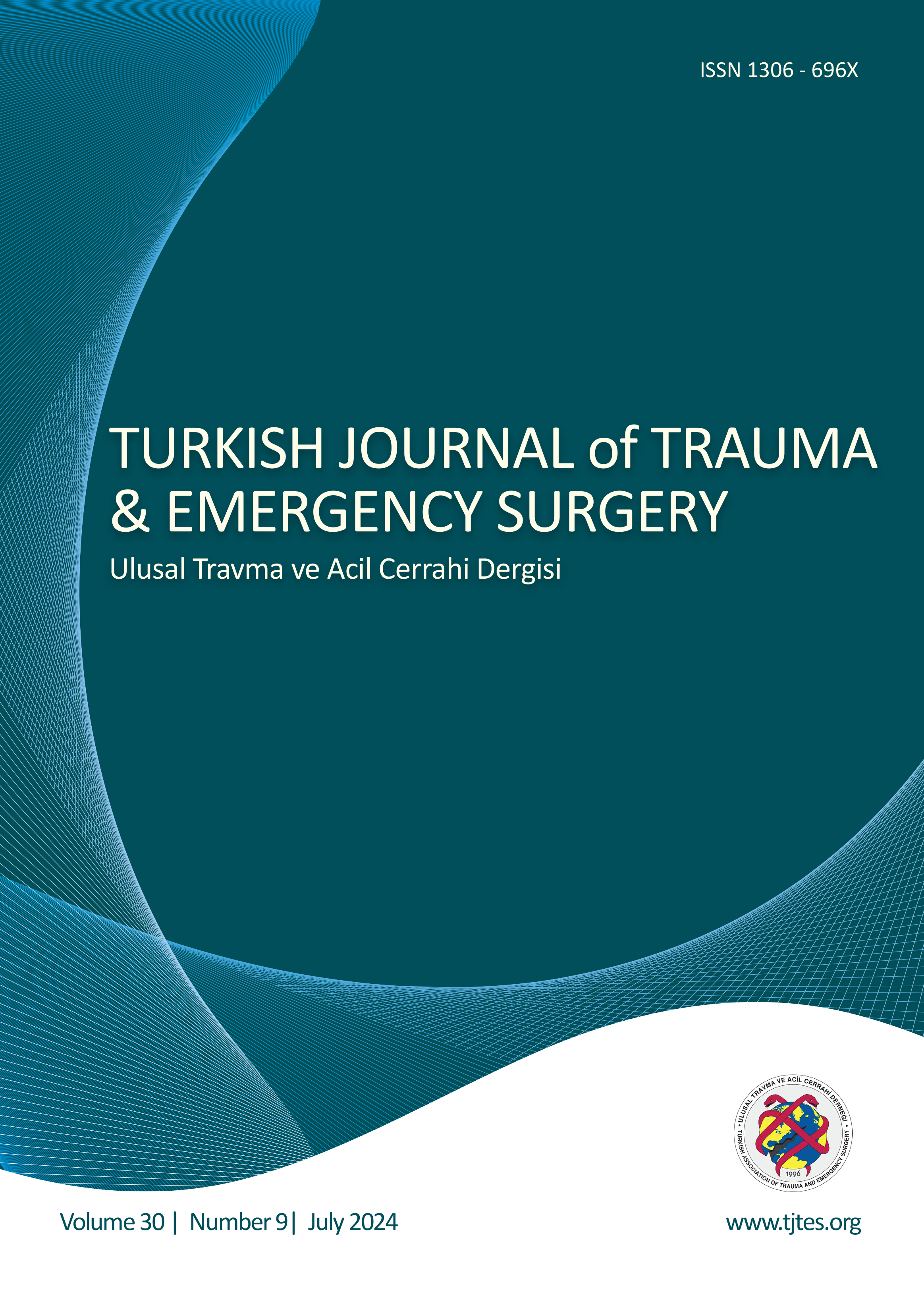Hızlı Arama
Yoğun bakımda ağrı takibi: Nosisepsiyon düzeyi indeksi tedavi ve prognozu nasıl etkiler? Randomize kontrollü, çift kör bir çalışma
Berna Çalışkan, Zeki Besir, Oznur SenHaseki Eğitim ve Araştırma Hastanesi, Anesteziyoloji ve Reanimasyon Anabilim Dalı, İstanbul, TürkiyeAMAÇ: Özellikle ameliyat sonrası yoğun bakımda ağrı yönetimi önemlidir. Bu çok boyutlu sorunu yönetmek için klinisyenlerin ağrıyı hasta bazlı bir şekilde tespit etmeye yönelik objektif ve etkili standartlar sağlamaları gerekir. Yeni bir teknoloji olan nosisepsiyon düzeyi indeksi, çok parametreli değerlendirmesiyle bu görevi başarmak için umut verici bir adaydır.
GEREÇ VE YÖNTEM: Heterojen yoğun bakım ünitesindeki iki grubu (n=30) karşılaştırmak için prospektif, kontrollü, randomize bir çalışma tasarlandı. Genel anestezi sonrası yoğun bakım takibi için 18 yaş üstü ve Amerikan Anesteziyoloji Derneği skoru I-III olan hastalar seçildi. Tüm hastalara, kurtarma analjezisini de içeren standart analjezi protokolü verildi ve ilaç uygulaması, Grup NOL'de nosisepsiyon düzeyi indeksi monitörizasyonu tarafından yönlendirilirken Grup Kontrol'de sayısal bir derecelendirme ölçeği ve kritik bakım ağrı gözlem aracı tarafından yönlendirildi.
BULGULAR: Ağrı skorları açısından gruplar arasında anlamlı fark yoktu. NOL Grubu içindeki ağrı skorları ve nosisepsiyon değerleri güçlü bir pozitif korelasyon gösterdi. Toplam analjezik tüketimi NOL grubunda anlamlı derecede düşüktü (p=0.036).
SONUÇ: Ağrı için nosisepsiyon düzeyi indeksinin izlenmesi, yoğun bakımda kullanılan standart ağrı skorlarıyla karşılaştırıldığında ağrıyı tespit etmenin etkili bir yoludur. Rehberliğinde kişiselleştirilmiş analjezik titrasyonuna yardımcı olur. Nosisepsiyon düzeyi indeksinin yoğun bakım ve hastanede kalış süresini azaltma üzerindeki etkisi, daha fazla çalışma ile ortaya çıkarılmayı bekleyen deliryum üzerindeki etkisiyle bağlantılı olabilir.
Anahtar Kelimeler: Ağrı takibi, davranışsal ağrı skorları, deliryum, nosisepsiyon düzeyi indeksi; postoperatif bilişsel işlev bozukluğu; postoperatif ağrı.
Pain monitoring in intensive care: How does the nociception level index affect treatment and prognosis? A randomized, controlled, double-blind trial
Berna Çalışkan, Zeki Besir, Oznur SenDepartment of Anesthesiology and Reanimation, Haseki Training and Research Hospital, İstanbul-TürkiyeBACKGROUND: Effective pain management is vital in critical care settings, particularly post-surgery. Clinicians should maintain objective and efficient standards to assess pain in a patient-centered manner, in order to effectively manage this complex issue. A newer technology, the nociception level (NOL) index, shows promise in achieving this task through its multi-parameter evaluation.
METHODS: This study was a prospective, controlled, randomized trial involving two groups of patients (n=30 each) in a diverse intensive care unit. Participants were over 18 years old with American Society of Anesthesiology scores ranging from I to III and were scheduled for critical care follow-up after general anesthesia. All subjects followed a standard analgesia protocol that included rescue analgesia. Drug administration was guided by a numeric rating scale and the critical care pain observation tool in the Control Group, while it was guided by nociception level index monitoring in the NOL Group.
RESULTS: Pain scores between the two groups did not significantly differ. However, within the NOL Group, pain scores and noci-ception values displayed a strong positive correlation. Notably, total analgesic consumption was significantly lower in the NOL Group (p=0.036).
CONCLUSION: Monitoring pain using the nociception level index is an effective method for detecting pain compared to standard pain scores utilized in critical care. Its guidance facilitates personalized analgesic titration. Additionally, the potential of nociception level index guidance to reduce the duration of intensive care and hospital stays may be linked to its effects on delirium, a connection that awaits further exploration in future studies.
Keywords: Behavioral pain scores, delirium, nociception level index, pain monitoring; postoperative cognitive dysfunction; postoperative pain.
Makale Dili: İngilizce





